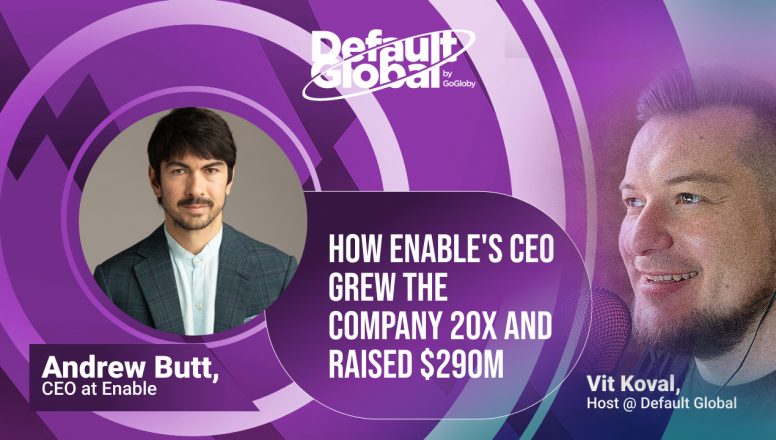Meet Giles Lewis, Talent Acquisition Leader:
With 16 years in executive search and leadership hiring, Giles Lewis is a dynamic Global Talent Acquisition Leader. His journey spans executive search firms, Saudi Aramco in Saudi Arabia, Coupang in South Korea, and roles in the UK. Notably, he led executive recruiting for Rotalk in oil and gas globally and currently spearheads executive hiring at Matillion, a high-growth SaaS data company. Giles’ global expertise, strategic acumen, and diverse industry experience mark him as a leader shaping the future of executive recruiting on an international scale.
Listen Up: Giles Lewis, Talent Acquisition Leader — Full Podcast Episode on Spotify
Watch Now: Vit’s In-Depth Talk with Giles Lewis
Quick Read: Giles Lewis, Talent Acquisition Leader, Interview Highlights
The Journey from Oil and Gas to Tech
In a recent episode of Default Global, I had a fascinating conversation with Giles Lewis, a Talent Acquisition Leader with a diverse background across industries and geographies. Giles shared his journey from the oil and gas sector to the tech industry, noting that while every company and industry is different, the core skills for recruiting remain the same.
“If you’ve got really strong experience in talent acquisition and you know how to acquire talent, you can apply that to a number of different industries relatively quickly,” he said.
In his case, the transition wasn’t difficult, and he even found that bringing a fresh perspective often helps.
Pros and Cons of Tech and Oil & Gas Industry
When comparing the tech and oil and gas industries, Giles highlighted that both sectors offer plenty of opportunities for talent acquisition professionals, despite being a bit unstable from a hiring perspective. They’re both subject to market whims and undergo cyclical hiring and shedding of talent. However, he found more room for innovation and autonomy in tech companies than in the corporate structure of oil and gas firms.
He said, “There’re so many of these small, nimble, scaling tech companies where you can come in as a talent acquisition leader and really build something quite interesting, build your own empire, build your own talent acquisition structure that’s leading edge.”
Recruiting Leadership Roles Globally
On the topic of recruiting for leadership roles on a global scale, Giles stressed the importance of tailoring the approach to the specific needs and characteristics of the talent pool.
“You really need to tailor that a little bit more than you would do, I think, for mass recruiting,” Giles explained.
He also emphasized the importance of diversity, stating, “Diversity becomes more of a challenge as you go up the tree. There simply is less diversity in any dimension of diversity, and we really need to be cognizant of that and think about how we can develop that next level of talent, whether that’s internally or whether we hire people externally and then develop them.”
Adapting Recruitment Approaches in Different Regions
Giles also shared his experiences in adapting recruitment approaches in different regions. For example, in Korea, he found that face-to-face networking was more critical than in the UK or North America. He highlighted the importance of understanding the cultural realities and preferences of the talent you’re looking to approach and mentioned the increasing role of LinkedIn in this region.
AI and Talent Acquisition
Lastly, we discussed the integration of AI in talent acquisition. Giles believes that we’re at the start of a significant transformation in this aspect. AI can assist with administrative tasks, help craft job descriptions, suggest a sourcing strategy, and even proofread messaging with a diversity mindset.
“I think it’s really going to jump on in leaps and bounds over the next few months, and we’re going to start seeing some really exciting things beyond just the automation and administrivia and administrative work. You’re really going to start to see some interesting things happening,” he said.
In conclusion, Giles Lewis painted a vivid picture of the evolving landscape of talent acquisition, highlighting the intersection of technology, cultural nuances, and personal connections in the process. His insights offer a valuable perspective for anyone navigating the complexities of global talent acquisition and the transition between industries.






